I can't even begin to give you a proper history run-down of Williamsburg, but if you'd like to learn more, check out the official website HERE.
Here is my very quick summary - Williamsburg was settled in Virginia between the York River and James River, and served as the capital of the Virginia Colony from 1699 to 1780. It played a significant role in the American Revolution, and is part of the "Historic Triangle"along with nearby Jamestown and Yorktown. Colonial Williamsburg is at the heart of it all - a thriving historic district and living-history museum where historical interpreters in 1700's costumes portray daily colonial life.
We LOVED Colonial Williamsburg. There is so much to do and so much to learn. Daily tickets are required to get into some of the buildings and exhibits, but anytime you can freely roam the streets and go in the shops and taverns. It is amazing, and I could have easily spent weeks here!
First, we started our day with a carriage ride and tour to learn our way around.
Historians & Historical Interpreters
There are people dressed in period-appropriate clothing all along the streets and in the buildings. Everyone was very knowledgeable and happy to answer questions or chat. All have a specific purpose within the town - tour guides, carriage drivers, shop keepers, farmers, wood workers, blacksmith, and so much more.
The Governor's Palace
The Governor's Palace is a fine example of the grandeur of royal government in Virginia just before its collapse. Expensive marbles and tapestries were indeed a splurge during any time; however, it is reported that Thomas Jefferson was never impressed with this Governor's Palace. Most records of the structure come from his notes and floor plan sketches during his time there. Our tour guide mentioned that Jefferson never met a building that he didn't want to change.
One of the most impressive features in the entry were the guns and swords lining the walls. Sawyer had lots of questions about this interesting choice of decor. We learned this display was very impractical and all of the weapons would take quite some time to actually remove from the wall and make ready for use.
The gardens behind the palace were quite beautiful, and even had a hedge maze that the kids loved exploring.
The Magazine
Located in the center of the town, the magazine served as storage for the arms and ammunition for the entire colony. There was a soldier giving a musket firing demonstration that we enjoyed, and he altered answered several questions about the different types of muskets and rifles on display.
The Courthouse
This courthouse was used for common complaints and suits under twenty shillings. Anything that garnered more importance or money was handled at the Capital building just down the road at the end of the Duke of Gloucester Street.
The Capitol Building
This was the home of government in Virginia, all part of the transition from Colony to Commonwealth, with a court room and the House of Burgesses. The Capitol was eventually moved to Richmond, Virginia, in 1779.
The Wythe House
George Wythe was the first American law professor and a signer of the Declaration of Independence. He served as tutor and later as advisor to Thomas Jefferson. His home was used as headquarters for George Washington and his council during the Revolutionary War, and this is where they met to plan the attack on Lord Cornwallis at nearby Yorktown in 1781.
The Carpenter's Shop
We really enjoyed visiting with the carpenter's yard and asking questions as they worked. We learned that they all use tools and methods appropriate to the time period. Their nails, hatchets, axes, etc are all forged by the Colonial Williamsburg blacksmiths, based on relics from the time found by archeologists. These historians craft all of the timbers, shingles, benches, etc used to recreate structures throughout this historic area to ensure authenticity.
Farming
It was really thrilling to come upon a man working his field with a horse-drawn plow. He explained to us how the plow was crafted by the Colonial Williamsburg carpenters just down the road. On his plot of land he farms tobacco, cotton and corn, and was in the process of planting clover as a soil rejuvenation crop for the winter.
There were also several fields of sheep, and we even spotted them out for a walk in the middle of town.
The Cooper
The Cooper (wood worker/barrel maker) was busy at work crafting a wood mug with a chisel. His shop was full of wooden buckets, barrels, cups, containers and more.
Historic Structures
The buildings here all have a story of their own. In Colonial Williamsburg, there are over 500 original, restored, or reconstructed buildings.
We truly enjoyed our time here and would be thrilled to visit again in the future. This time of year, Christmas decorations were going up around town, and everything was quite festive. Colonial Williamsburg adjoins a cute downtown with shops and restaurants, as well as the campus for the College of William and Mary. So much of Williamsburg is constructed with the same colonial style brick and architecture which just sets the scene for a historically compelling adventure.































































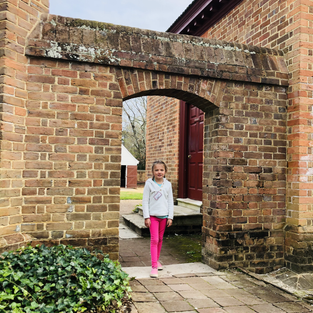

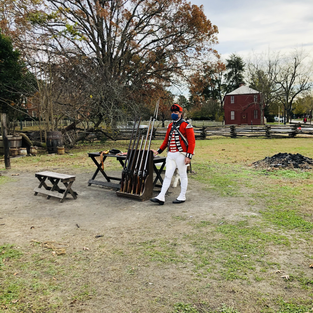



































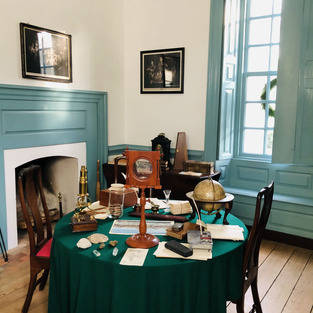




































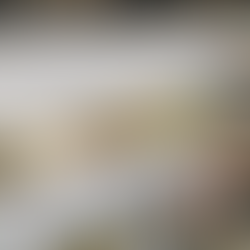






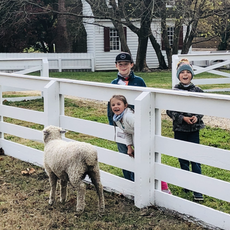







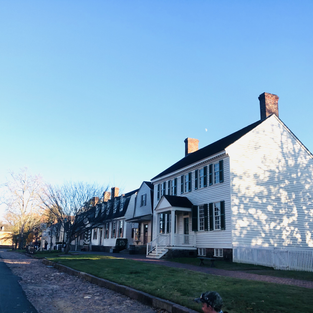

























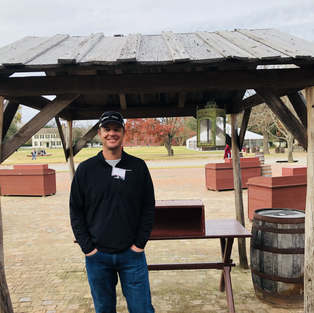

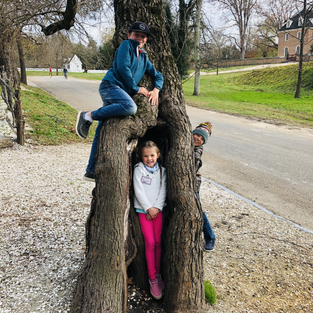
Comments